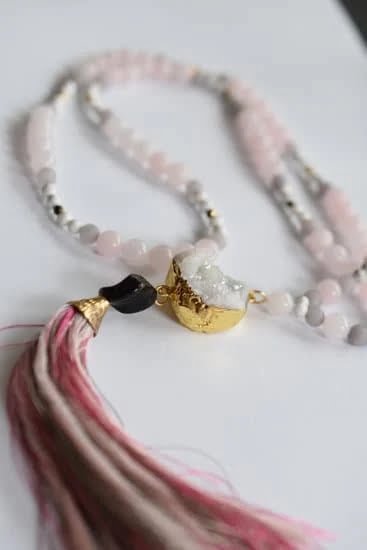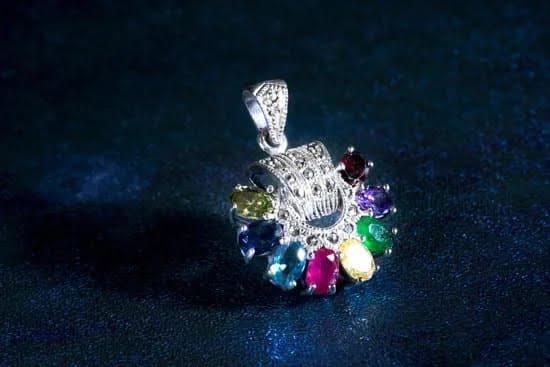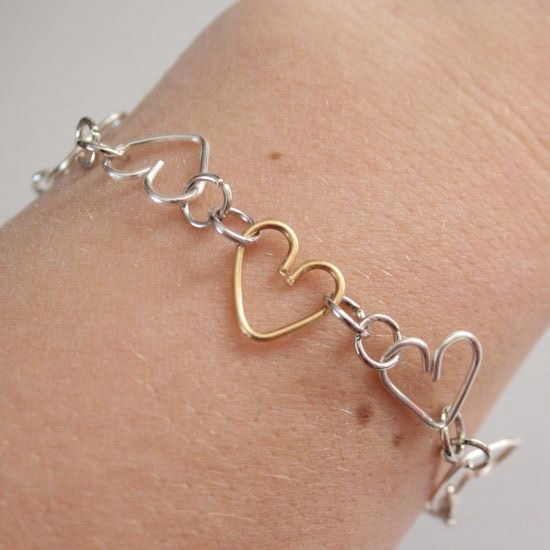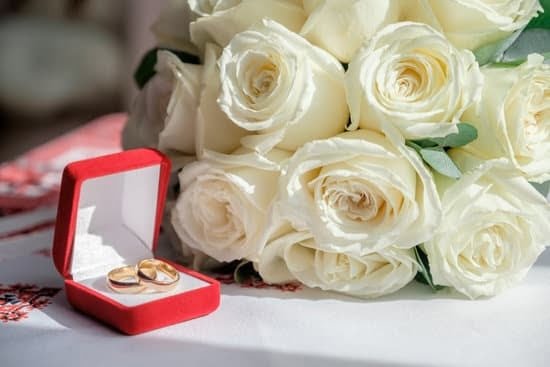Gold plated jewelry is a popular and affordable alternative to solid gold, but it comes with its own set of limitations. One common concern among wearers is whether or not gold plated jewelry can be exposed to water without causing damage. In this article, we will explore the process of gold plating, the risks associated with getting gold plated jewelry wet, and tips for protecting and maintaining your pieces.
In order to understand the potential issues with water exposure, it is important to first distinguish between gold plated jewelry and solid gold. Gold plated jewelry is made by applying a thin layer of gold onto a base metal, such as brass or copper.
This layer can range from as little as 0.175 microns to 2.5 microns in thickness. On the other hand, solid gold jewelry is made entirely from the precious metal and does not have a base metal core.
The process of gold plating makes these pieces more susceptible to damage from water exposure compared to solid gold. When water comes into contact with the base metal beneath the thin layer of gold, it can lead to tarnishing, discoloration, and even peeling or flaking of the outer layer. In the following sections, we will delve deeper into these risks and discuss effective ways to protect your gold plated jewelry from water damage.
The Process of Gold Plating
Is Typically Less Than 0.5 Microns Thick
, making it more delicate and prone to damage compared to solid gold.
The process of gold plating involves several steps, starting with the cleaning and polishing of the base metal to ensure that the surface is free from any contaminants. Once the base metal is prepared, it is placed in a solution containing dissolved gold ions and an electric current is applied to facilitate the deposition of gold onto the surface of the metal. This results in a thin layer of gold being bonded to the base metal through electroplating.
The Thin Layer of Gold Can Easily Wear Off or Become Damaged When Exposed to Water
When water comes into contact with gold plated jewelry, it can cause the underlying base metal to tarnish or corrode, leading to discoloration and deterioration of the piece. Additionally, prolonged exposure to water can also weaken the bond between the gold layer and the base metal, causing it to peel or flake off over time. As a result, it is important to take extra precautions when wearing gold plated jewelry in wet conditions.
Risks of Getting Gold Plated Jewelry Wet
Gold plated jewelry is a more affordable alternative to solid gold, but it is important to understand that it may not be as resilient when exposed to water. The process of gold plating involves coating a base metal with a thin layer of gold, making it more susceptible to damage from moisture.
This poses the question: can you get gold plated jewelry wet? While some gold plated jewelry can handle light exposure to water, prolonged or frequent contact with moisture can lead to tarnishing and discoloration.
When gold plated jewelry comes into contact with water, the metal beneath the gold plating begins to oxidize, leading to tarnishing and discoloration of the jewelry. This occurs because moisture can penetrate through worn-down patches in the gold plating or through small cracks, causing the base metal to react with the elements. This reaction results in changes in the appearance of the jewelry, such as darkening or a greenish tint.
In addition to tarnishing and discoloration, exposing gold plated jewelry to water can also lead to a weakening of the bond between the gold plating and the base metal. Over time, this can cause the gold plating to flake off or wear away, leaving areas of the base metal exposed. As a result, it is crucial for those who own gold plated jewelry to be cautious about their exposure to water in order to preserve its longevity and appearance.
| Consequences | Examples |
|---|---|
| Tarnishing | Darkening or greenish tint |
| Discoloration | Changes in appearance over time |
| Weakened Bonding | Flaking off or wearing away of gold plating |
How to Protect Gold Plated Jewelry
Gold plated jewelry is a stylish and affordable option, but it does require some special care to keep it looking its best. One of the common concerns with gold plated jewelry is its susceptibility to damage from water exposure. So, can you get gold plated jewelry wet?
The short answer is yes, but prolonged or repeated exposure to water can cause damage such as tarnishing and discoloration. To prevent this, there are several measures you can take to protect your gold plated jewelry and extend its lifespan.
One of the most important tips for protecting gold plated jewelry from water damage is to avoid exposing it to moisture as much as possible. This means taking off your gold plated pieces before swimming, showering, or participating in any water-related activities. Additionally, it’s essential to remove your gold plated jewelry before using any products that contain chemicals, such as lotions, perfumes, and hair products.
For added protection against water damage, consider applying a thin layer of clear nail polish over the metal parts of your gold plated jewelry. This creates a barrier that helps shield the piece from moisture and prolongs its luster. Another option is to invest in a specialized protective coating designed specifically for preserving the finish of gold plated jewelry.
Proper storage also plays a crucial role in safeguarding your gold plated pieces from water damage. When you’re not wearing them, store your jewelry in a dry place away from direct sunlight and humidity. Keep each piece separate from others to prevent scratching or rubbing, which can compromise the plating and make it more susceptible to water-induced damage.
| Protect Gold Plated Jewelry | Tips |
|---|---|
| Avoid Water Exposure | Remove before swimming or showering |
| Apply Clear Nail Polish | To create a protective barrier against moisture |
| Invest in Protective Coating | Specialized product designed for preserving the finish |
Alternatives to Gold Plated Jewelry
When it comes to jewelry, especially for everyday wear, it’s important to consider the potential for water exposure. Gold plated jewelry may not be the best option if you’re someone who frequently comes into contact with water. In this section, we’ll explore some alternatives to gold plated jewelry that are more resistant to water damage, such as solid gold or stainless steel.
Solid Gold Jewelry
Solid gold jewelry is a popular alternative to gold plated jewelry, especially for those looking for something more durable and resistant to water exposure. Unlike gold plated pieces, solid gold jewelry is made entirely of the precious metal, making it less susceptible to tarnishing or discoloration from water. While solid gold jewelry may be pricier than gold plated options, its longevity and resistance to damage make it a worthwhile investment for many.
Stainless Steel Jewelry
Stainless steel is another excellent alternative for those seeking water-resistant jewelry. This metal is highly durable and does not tarnish or corrode easily when exposed to water. Stainless steel jewelry is also more affordable than solid gold, making it a practical choice for everyday wear. With its sleek and modern look, stainless steel has become increasingly popular in the world of fashion jewelry.
Other Options
In addition to solid gold and stainless steel, there are other materials that offer excellent resistance to water damage. Titanium and platinum are two examples of metals that are highly resilient against corrosion and tarnishing from water exposure. For those who prefer non-metal options, ceramic and silicone are becoming more prevalent in the jewelry market due to their waterproof properties.
Ultimately, choosing the right type of jewelry depends on your lifestyle and personal preferences. Whether you opt for solid gold, stainless steel, or another water-resistant material, selecting high-quality pieces will ensure that your jewelry withstands the test of time – even when they get wet.
Proper Care and Maintenance
Gold plated jewelry can add a touch of elegance and sophistication to any outfit, but it requires proper care and maintenance to prolong its beauty. Unlike solid gold, gold plated jewelry is made by applying a thin layer of gold over a base metal. This process makes it more susceptible to damage from water exposure.
So, can you get gold plated jewelry wet? The short answer is no, it is not recommended to get gold plated jewelry wet as it may cause tarnishing and discoloration.
To care for your gold plated jewelry, it is important to keep it dry and away from moisture as much as possible. When cleaning your jewelry, use a soft cloth to gently wipe away any dirt or oils that may have accumulated. Avoid using harsh chemicals or abrasive materials that can scratch or remove the gold plating. Additionally, store your gold plated jewelry in a dry place, away from humidity and moisture, to prevent tarnishing.
It is also important to note that excessive exposure to sunlight and air can also affect the quality of your gold plated jewelry. To protect it from these elements, consider storing your pieces in an airtight container or resealable plastic bag when not in use. By following these simple care and maintenance tips, you can help preserve the beauty and luster of your gold plated jewelry for years to come.
Waterproofing Gold Plated Jewelry
If you have gold plated jewelry that you simply cannot avoid exposing to water, there are a few products and methods that can help waterproof it and protect it from damage. While it is generally best to keep gold plated jewelry dry to avoid tarnishing and discoloration, sometimes water exposure is unavoidable. Here are some tips for waterproofing your gold plated jewelry if wearing it in water is absolutely necessary:
1. Clear Nail Polish: One popular method for waterproofing gold plated jewelry is to apply a thin layer of clear nail polish to the surface. This creates a protective barrier that helps prevent moisture from reaching the metal underneath. Simply brush on a thin layer of clear nail polish and allow it to dry completely before wearing the jewelry in water.
2. Jewelry Sealant: There are specially formulated sealants designed specifically for protecting jewelry from water damage. These sealants create a transparent and durable coating that shields the metal from moisture. Be sure to follow the manufacturer’s instructions carefully when applying these sealants, as improper application can affect the appearance of the jewelry.
3. Silicone Coating: Another option for waterproofing gold plated jewelry is to use a silicone coating spray or dip. This forms a flexible and water-resistant barrier over the metal, preventing water from coming into contact with the surface of the jewelry. Like with other methods, be sure to read and follow the product instructions to ensure effective application.
Remember that while these methods can help protect your gold plated jewelry from water damage, they may not provide complete and permanent waterproofing. It is still best practice to minimize exposure to water whenever possible and properly care for your jewelry as outlined in this article’s section on proper care and maintenance.
Conclusion
In conclusion, the decision to get gold plated jewelry wet ultimately depends on the individual piece and the quality of its plating. As discussed, gold plated jewelry is more susceptible to damage from water due to its composition and the process of plating. Exposure to water can lead to tarnishing, discoloration, and even peeling of the thin layer of gold. Therefore, it is generally recommended to keep gold plated jewelry dry in order to preserve its appearance and longevity.
While there are methods for waterproofing gold plated jewelry, such as using clear nail polish or specialized sealants, these may not provide foolproof protection. It is important to consider the potential risks and take extra precautions if opting to wear gold plated jewelry in wet conditions. Additionally, it is essential to follow proper care and maintenance practices for gold plated jewelry, such as avoiding contact with harsh chemicals and storing it in a dry environment.
In light of these considerations, individuals may also want to explore alternative options for jewelry that are more resistant to water damage. Solid gold and stainless steel are durable choices that can withstand exposure to water without compromising their appearance. Ultimately, while some may choose to take the risk of getting gold plated jewelry wet on occasion, it is important to weigh the potential consequences and make an informed decision based on the specific piece in question.
Frequently Asked Questions
Can You Wear Gold Plated Jewelry in Shower?
It’s not advisable to wear gold plated jewelry in the shower. The water and soap can cause it to tarnish or lose its shine over time. Additionally, the chemicals in shampoos, conditioners, and body washes can also be harsh on the plating and affect its durability.
What Happens When Gold Plated Jewelry Gets Wet?
When gold plated jewelry gets wet, the water can cause the plating to wear off more quickly. This can result in discoloration or a dull appearance as the base metal underneath becomes exposed. It’s best to remove gold plated jewelry before coming into contact with water to preserve its quality.
How Long Does Gold Plated Jewelry Last?
The longevity of gold plated jewelry depends on various factors such as how often it is worn, how well it is cared for, and the thickness of the plating. On average, with proper care and maintenance, gold plated jewelry can last anywhere from six months to two years before needing re-plating.
However, frequent wear or exposure to moisture or chemicals can shorten its lifespan.

Welcome to my jewelry blog! My name is Sarah and I am the owner of this blog.
I love making jewelry and sharing my creations with others.
So whether you’re someone who loves wearing jewelry yourself or simply enjoys learning about it, be sure to check out my blog for insightful posts on everything related to this exciting topic!





